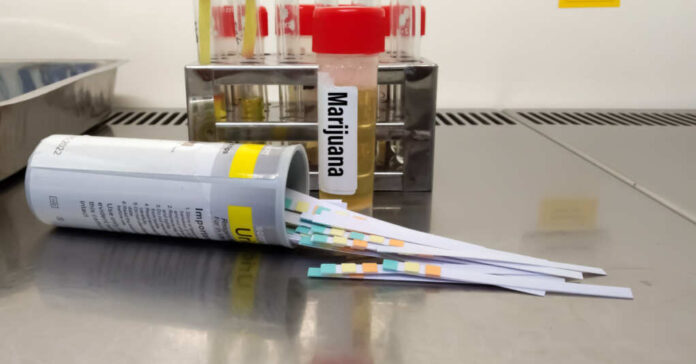
For decades, people have posed the odd and illegal question, “Why drink and drive when you can smoke and fly?” Both substances are now legal for adult use in over 20 states. Medicinally, use has been legalized in most states, too, and we need a way to test for marijuana use with greater sensitivity.
Currently, any marijuana testing law enforcement agencies can perform can only tell about use within the last month or so. This yes/no answer comes in the form of THC blood testing more often than not. It doesn’t test for active impairment or discriminate based on levels of THC. For frequent users like medicinal patients, this puts them at a distinct disadvantage in being able to prove innocence.
Now, thanks to researchers at the University of Colorado (UC), they have found a better test as a result of funding from the National Institute on Drug Abuse (NIDA). Published in the journal Clinical Toxicology, the results could have a profound impact on criminal marijuana cases going forward. Michael Kosnett, an associate adjunct professor and cannabis researcher at UC’s Colorado School of Public Health, provided a press release about the test.
“Currently, when people (from forklift operators to ride-share drivers) get into a crash or mishap at work, the most typical thing that happens is their employer requires a urine drug test. But the urine drug test measures an inactive metabolite of THC called carboxy THC (THC-COOH). So they are measuring something in the urine that doesn’t even have psychoactive effects. More than that, it stays positive long after the acute psychomotor and neurocognitive effects of using cannabis last.”
Kosnett continued, “The police tried to improve upon this situation for drivers by measuring THC in blood. But even when you are measuring THC itself in the blood, which is psychoactive, it doesn’t necessarily tell you how long ago the person used it. And the reason for that is THC is a very fat-soluble substance, and the THC comes out of the blood and gets stored and builds up in a person’s body fat.”
However, Kosnett also offered caution. For the daily smoker, a pause in consumption can result in a dramatic increase in free-flowing THC in their bloodstream after the user takes a day or two off. This can lead to inaccurate tests and “guilty” results despite not currently being impaired.
Testing this theory, they gathered a group of daily users, occasional (at least once but not more than twice a week), and a control group who never consumed. Before the test, daily users were told to abstain from smoking marijuana for at least 8 hours before the test or ingesting more than 12 hours before. Opening the test by driving around for 30 minutes, measurements of their performance were recorded.
Once done, they were given 15 minutes to consume their average consumption to get the desired level of results. Much like handing a 15-minute bar time to a panel from DUI testing, the participants consumed various amounts and strengths of marijuana. 15 minutes following their smoke fest, it was time for a blood draw. Then another 15 minutes later, back in the driving simulator.
During that 30-minute gap, they found the THC levels of daily users were five times higher than those of occasional users. Interestingly enough though, the daily user showed faster reaction time and faired far better in the driving simulator than the occasional smoker did. With 24 occasional and 32 daily users, they focused on two blood cannabinoid molar metabolite ratios; these were then compared to the THC results on their own.
Looking for a cut point of 0.18 or above of the molar metabolite ratio of THC to THC-COOH in the blood, they found some amazing results. 98% of the tests came back correctly (a 2% false positive rate), a 93% success rate (the test will fail to identify recent consumption only 7% of the time), and 96% accuracy (a combination of the two rates) in detecting recent cannabis smoking.
In comparison, when testing for THC alone, only 88% were returned correctly, with a 73% success rate and 80% accuracy. These results are horrible at best, and yet this is what law enforcement has been using. This leads to so many false convictions for crimes that weren’t committed, and now these new tests could put us on the right path.















